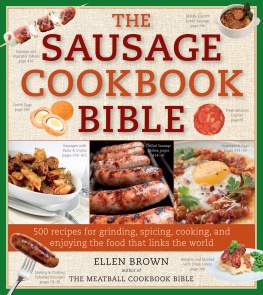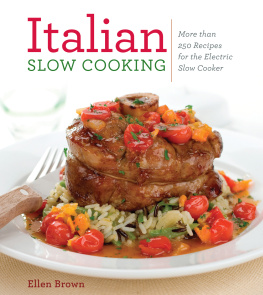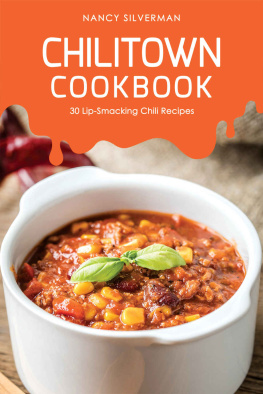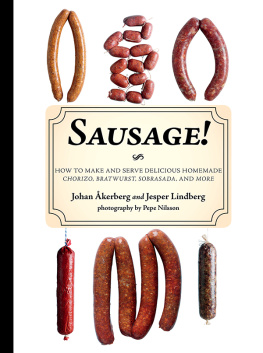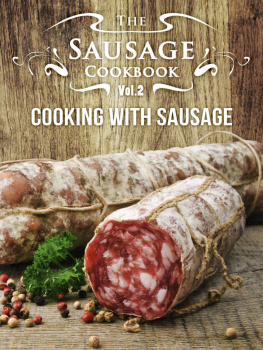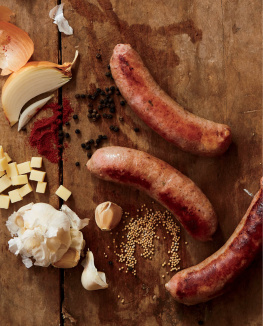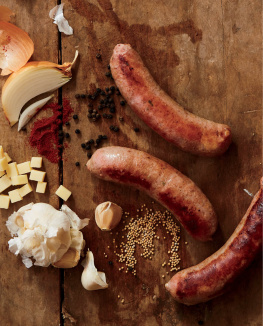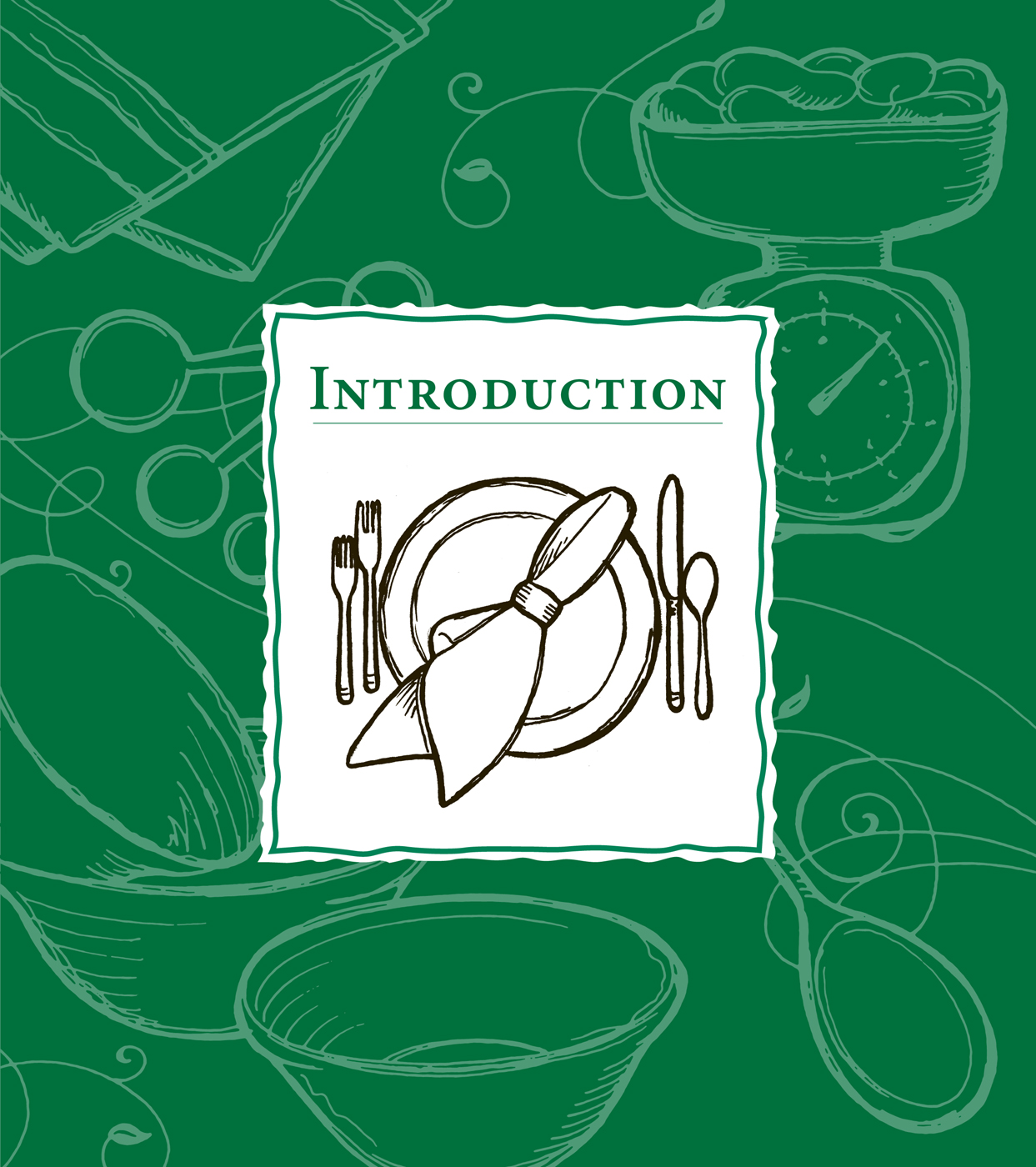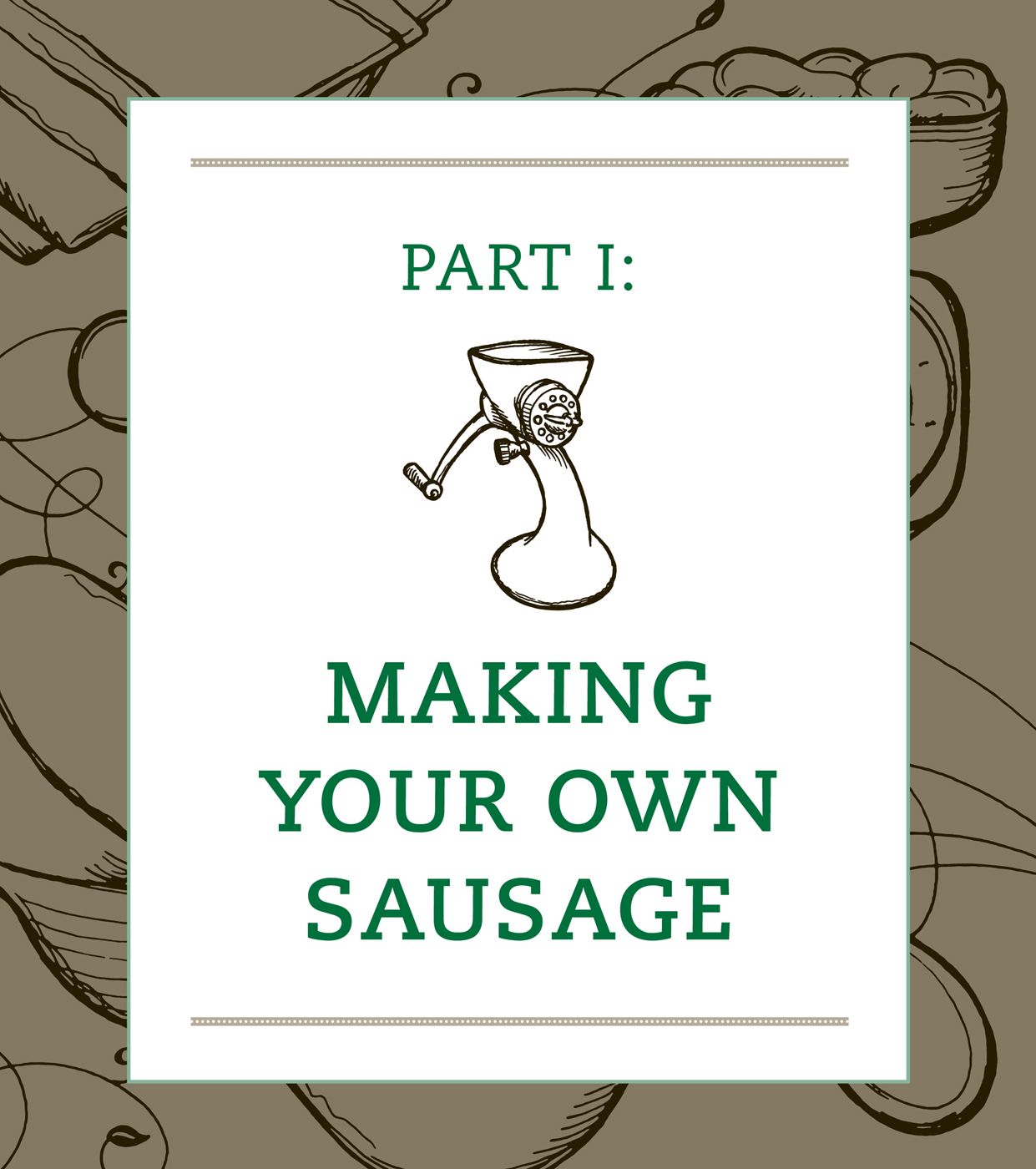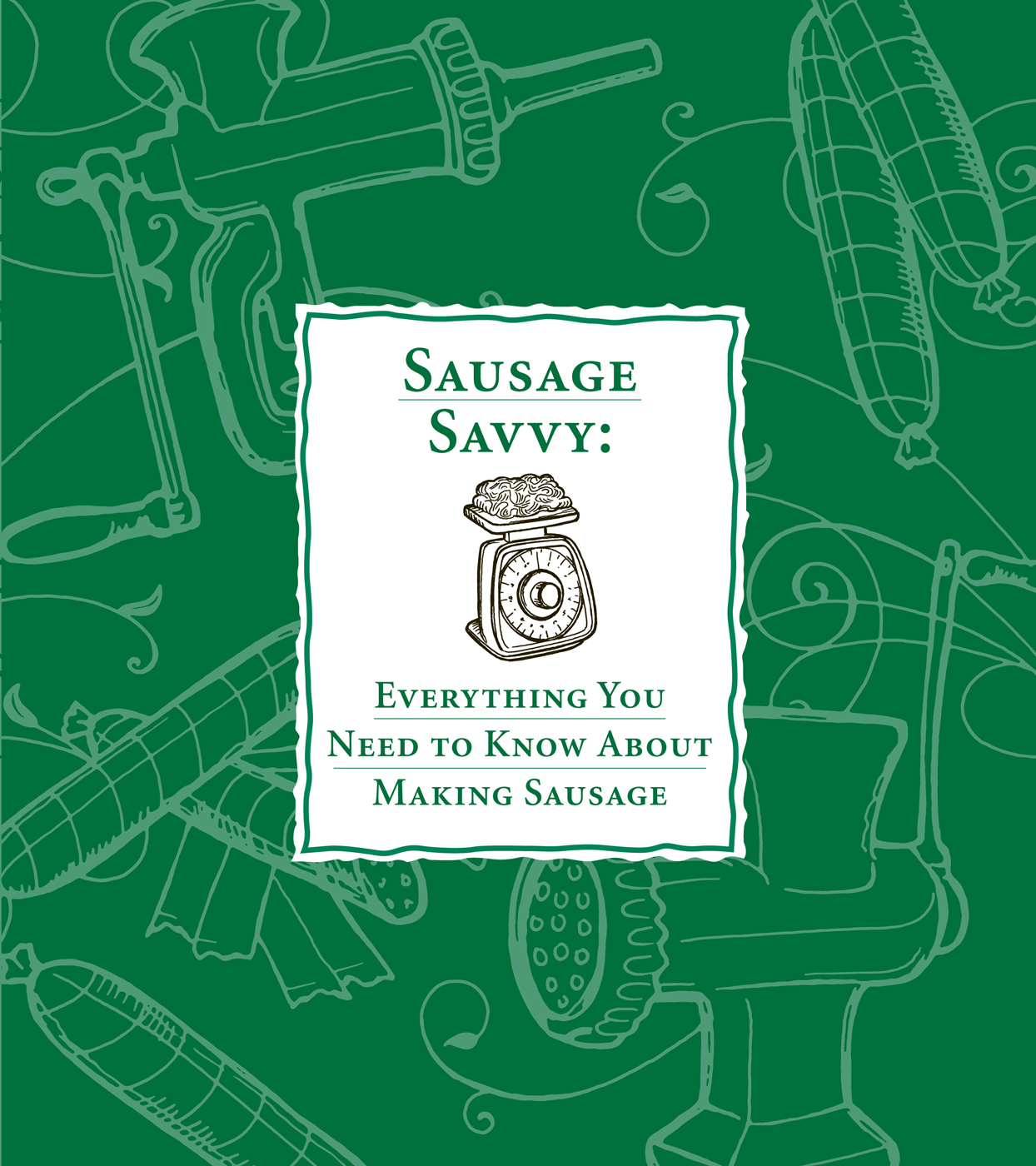CONTENTS
The Beatles sang we get by with a little help from our friends, and in my case I get by with a lot of help from my wonderful family. This book is dedicated to Nancy and Walter Dubler, Ariela Dubler, Jesse Furman, David Krimm, Peter Bradley, Josh Dubler, and Lisa Cerami.
W hen I think about eating at a baseball game, one thing comes to mind: sausages. It could be anything from a hot dog topped with some sauerkraut or a bratwurst in a paper holder. When I think about breakfast, one thing comes to mind: sausagethe sound of sizzling of links or patties makes eating eggs or waffles all that more terrific. And when I think about Italian food, one thing comes to mind. You guessed it: sausage. Hot or sweet, whole in casings or crumbled into the meaty, cheesy layers of lasagna or topping a pizza loaded with sauce and mozzarella. Lets face itI love sausage in all of its glorious, fabulous forms.
Sausages are part of many of my culinary memoriesboth from the number of cultures that create them to the times of day when Ive enjoyed them.
Many times I have slowly walked past shops that line the narrow alleys of Venice or been hypnotically drawn to stalls in markets in Nice as I take in the dizzying array cylindrical foods of all diameters hanging from hooks and piled up on platters.
And then there are meals Ive shared with friends as we tear off slices of pizza, trying to get them into our mouths before their garlicky pepperoni and fresh fennel and herb sausage toppings land on the plate below. But I guess thats why they invented forks.
Theres no doubt that sausage is fun food. Its fun to eat, and as youll discover, its also really fun to make it yourself.
Theres no question that you can find some really good sausages in almost every supermarket today, produced by manufacturers that use organic meats and no chemicals. But even with those gourmet sausages you cant have exactly the flavor you want or specify the ingredients.
Thats where making it yourself comes in. You can choose the meat you want to grind, or you can buy some pre-ground meat and save yourself the time and trouble. You can season the meat with myriad herbs and spices. You can flavor the meat with wine or liquor. You can add nuts and fruits to add texture. You can add cheese to contrast dairy creaminess with hearty meatiness.
Sausage is a paradox. Its simple food, but it has a complex flavor because of all the additional ingredients added before its cooked. As a simple food it has been around for more than two thousand years; there are references to sausages in Homers Odyssey. As a simple food, it also falls into the category of comfort foods. Theres nothing edgy about a sausage. Its about as straightforward a food as youll find.
But its a real hands-on process. And thats all part of the fun. You cube the meat, grind it, and knead the sausage mixture to blend its flavors to your personal taste and texture. You massage the meat into its casing, and twist it into links with your hands.
Although you can invest in some equipment and create professional-looking sausages, most of the recipes in this book can be cooked up as patties on the grill or in a skillet on the stove. I recommend making patties as a good first step, because some of the sausage making process may seem bit daunting and time-consuming at first. According to a quote often attributed to Otto von Bismarck, To retain respect for sausages and laws, one must not watch them in the making. But the more you do it, the faster youll become, and the sooner you can enjoy the fruitsor rather the meatsof your labor.
Today we all want to know that the food we eat is prepared under sanitary conditions and we want to be sure that only quality ingredients are used. Thats just another reason to start making your own sausage.
So, from Cajun Shrimp Boudin to Sweet Italian Sausage, this is one grind youll want to get into.

M aking sausage is no more difficult than making meatloaf. Ground ingredients are seasoned, shaped, and cooked. Thats it. In the first chapter, youll learn the techniques necessary to make sausages either in casings or as patties, as well as how to cook them properly. In the chapters that follow are recipes for some of the worlds classic sausagesfrom spicy Andouille Sausage of Cajun fame to delicate French Garlic Sausage to hearty Sweet Italian Sausage.
While sausage making has an illustrious past, it also is a contemporary food open to endless interpretations and improvisations. Included are my own innovative recipes for Lamb Sausage with Sun-Dried Tomatoes and Pine Nuts and Minnesota Boudin made with wild rice.
The sausage recipes are divided into chapters by the type of protein used as the main ingredientpork, beef, lamb, veal, chicken and turkey, fish and seafood, and a few vegetarian options. The last chapter includes the plain and fancy cousins of sausageshomey scrapple from Pennsylvania and elegant country pork terrine from France.
F ew culinary skills are involved when it comes to making sausage. Theres no spinning a swan from molten sugar or folding layers of puff pastry. It takes some basic equipment, most of which you likely have and some of which you can improvise. It takes some ingredientsfresh ones youll need to buy and dried herbs and spices you probably have in the pantry. And making sausage takes some time. Read this chapter through in its entirety to introduce yourself to the simple process of sausage making.
EQUIPMENT
You dont need much, and most items will already be on hand.
Kitchen scale. Absolutely necessary to make sure you have the correct amounts of meats and fat per recipe; sausage is not a food that should be eye-balled to determine your amount. The scale should be capable of weighing food up to five pounds.
Measuring cups and measuring spoons. An extra set of spoons means that one set can be used for liquid ingredients, the other for dry seasonings.
Good knives. These are essential for all cooking, including making sausage. Keep them sharp.
Kitchen twine. This used to be found in all kitchens, but a recent survey of my friends revealed that it no longer was, so buy some at a hardware or housewares store.
Instant-read thermometer. Along with good knives, this is essential. If you dont have one, heres a good excuse to buy one. Instant-read thermometers are how you determine if the sausages are cooked to a safe internal temperature.
Candy thermometer. Sometimes called a frying thermometer, it clips to the side of a pot. Youll use this to check the temperature of the water when poaching sausages. If you dont want to invest in one, keep popping your instant-read into the pot to keep the water at the correct temperature.
Kitchen funnel. Youll need this to flush out the casings. The nozzle should be narrow so as to not break the fragile casings.
Lots of kitchen towels or a roll of paper towels. Making sausage is messy, and youll constantly be washing your hands during preparation.
WAYS TO GRIND THE MEAT
Even if youre planning on using pre-ground meat, a meat grinder is a good idea because it can also be used to stuff sausage casings. The food processor is a great grinding alterative. My food processor is so important in my kitchen that it has a reserved corner of the dishwasher; its in there every time the dishwasher is run.

